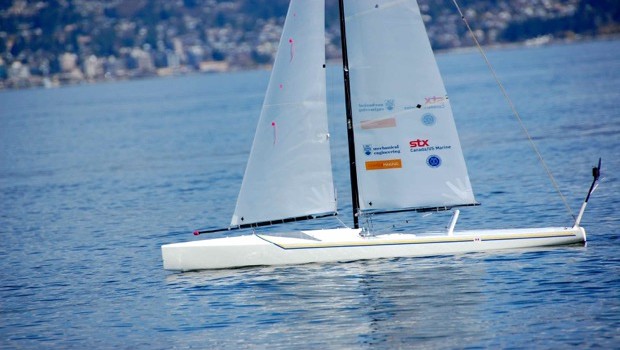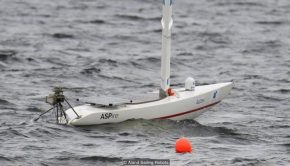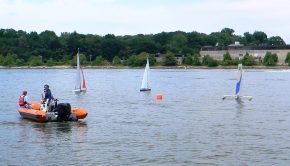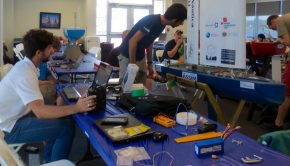“Sailbot” to set Transatlantic course
Published on January 28th, 2015
A group of students from the University of British Columbia (UBC) in Vancouver in West Canada has a dream, a dream to launch the first unmanned vessel to cross the Atlantic Ocean. The students motivation is neither class credit nor financial gain, they are simply passionate about complex programming, advanced electronics, and sailing.
The students have designed a robotic sailboat that they call a “Sailbot”. The plan is to launch the so-called “Sailbot” off the coast of Newfoundland in the far east of Canada this summer. After winning the International Robotic Sailing Regatta consecutively for the past three years, the students believe they are ready to take on the Atlantic Ocean.
Packing an advanced electronics package, accurate sensors, and satellite communication systems into a carbon fiber hull will ensure that the vessel can survive what the Atlantic Ocean has to offer. In addition, their advanced sailing logic and course planning software can optimize voyage time while minimizing risk of damage from storms or shipping traffic. A fully autonomous sailboat, the Sailbot will sail the North Atlantic for roughly two weeks before hopefully completing a 2,500-kilometer race in Dingle, an island off the west coast of Ireland.
The boat not only has to navigate across the ocean, it must do so totally under power provided by the Kevlar reinforced sails. The boat can sail at a speed of 10 knots and if all goes as planned the trip will take about 14 days, but it must rely on wind speed and direction, and plan its route accordingly based on updated weather information.
Since 2010, the group of 66 UBC students has been competing and winning at other robotic sailboat regattas with smaller versions of this automated vessel. Josh Andrews, a UBC Sailbot team member, said that the team had contacted the Microtransat Challenge, which is a transatlantic race of fully autonomous sailing boats.
The wind-powered boat controls itself with satellite navigation and infrared imaging. As it sails, it will send route information back to a website so the team and people around the world can monitor its progress through the icebergs and rough shipping channels of the North Atlantic.
“It’s all done with computers on board. There are basically two types of systems that we use. One is a navigational system that determines the route to go across the Atlantic Ocean, and the other is a sailing system that knows how to get from point A to point B. So when the two systems work together, it will get all the way across,” Andrews said.
Andrews said the main challenge would be the harsh Atlantic weather that could batter the ship or swallow it entirely. Running into other vessels could also be a problem. The ship, when completed in the next few months, will be able to use its thermal imaging equipment to recognize obstacles and navigate around them. Andrews said the computer system could also make the boat brace for impacts.
“I think a lot of the work that we’ve done has actually already been proven on a smaller scale, so we’re taking that technology and expanding it and making it work on a bigger scale which is the Atlantic Ocean,” he added. The team has had great press motivating the students to work harder at finishing the project. They are currently testing materials for the bow and building the few remaining bulkheads.
For more information and to follow the team’s progress, the team website is www.ubcsailbot.org.
The team’s Facebook page is https://www.facebook.com/ubcsailbot









 We’ll keep your information safe.
We’ll keep your information safe.